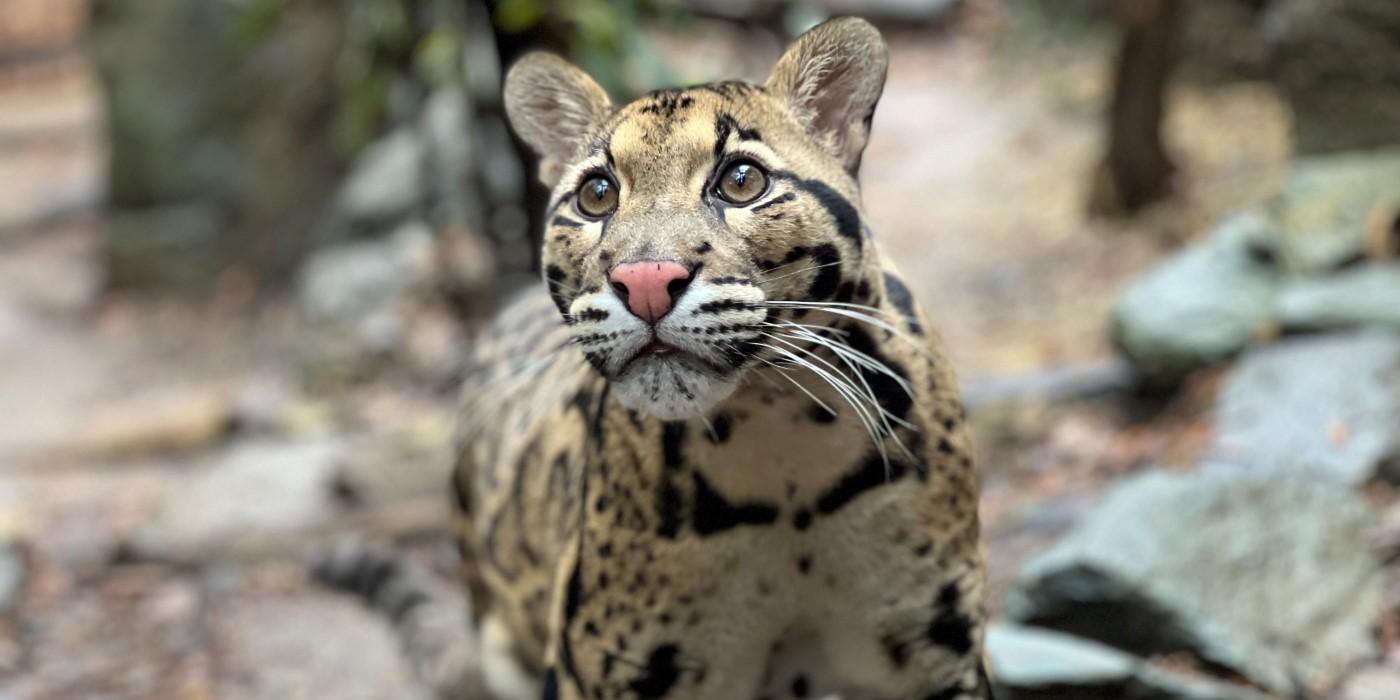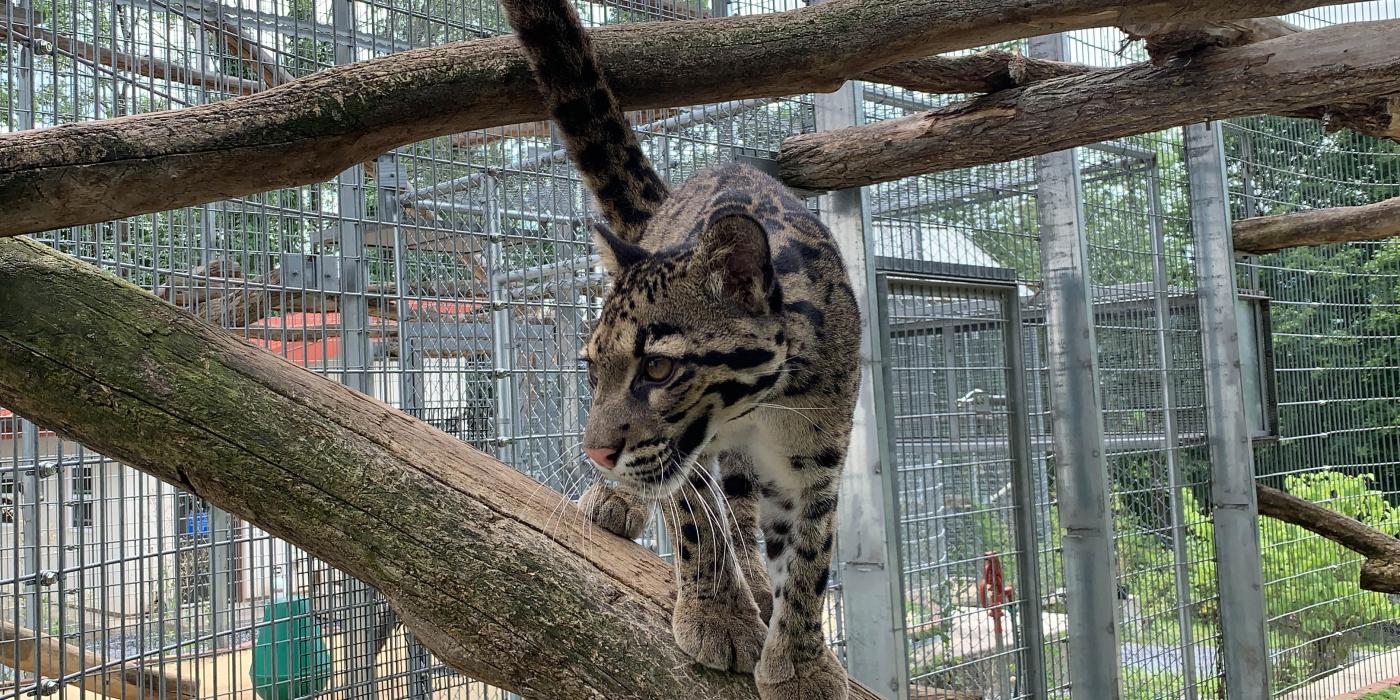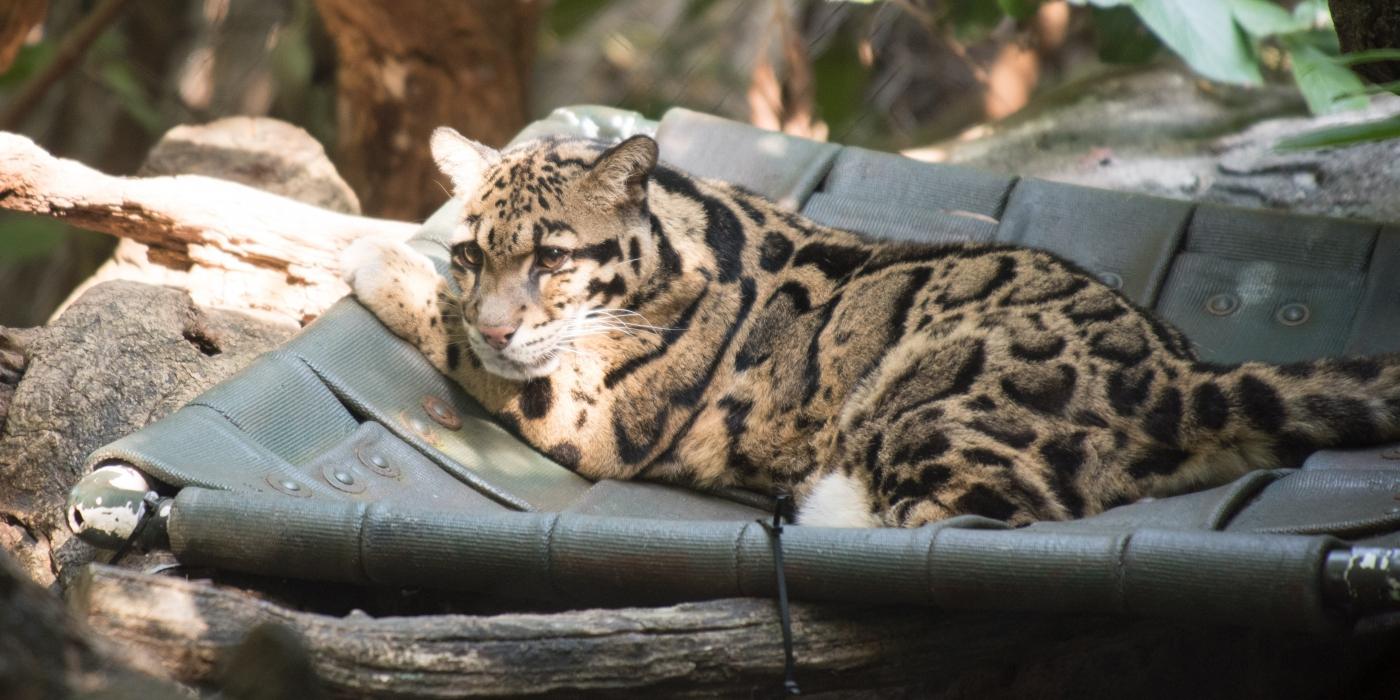How to Care for Clouded Leopards
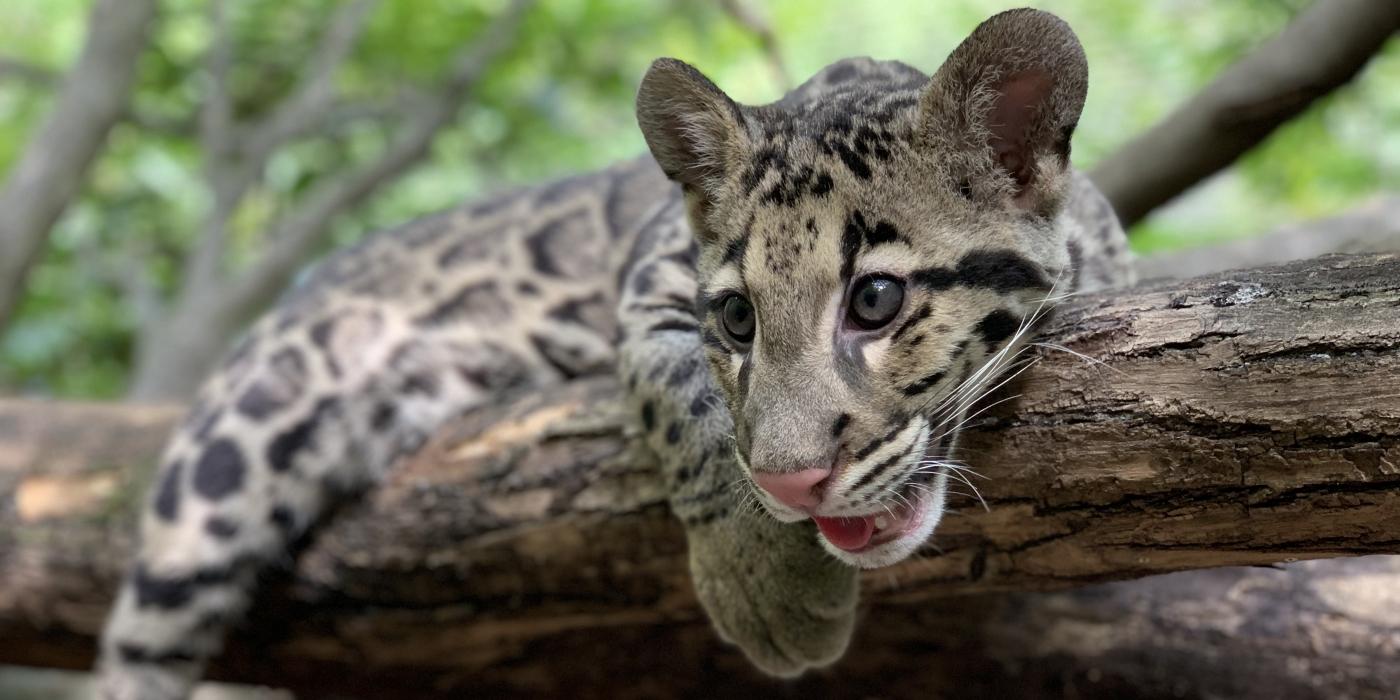
Meet Ariel, Jilian, Paitoon and Ta Moon—four clouded leopards who call the Smithsonian National Zoo and Conservation Biology Institute home. Pounce from Washington D.C. with Asia Trail keepers Kaitlyn Adkins and Jenny Spotten, to Front Royal, Virginia with animal keeper Jessica Kordell to learn more about these cool cats.

Jessica: Looking at a clouded leopard, it’s easy to think they are related to leopards. But they are not true leopards. Leopards, snow leopards and other great cats belong to the genus Panthera. Clouded leopards belong to their own genus, Neofelis.
Kaitlyn: As an evolutionary bridge between ‘big cat’ and ‘small cat’ species, clouded leopards share some characteristics of both. For example, clouded leopards can purr, meow, growl, hiss and ‘chuff’—a friendly greeting that sounds like a quick gust of wind.
Meet our 3-year-old female Jilian in this video, and get a closer look at what makes clouded leopards unique:
Jenny: Zoos allow visitors to meet animals they may have never seen or heard of before. There is nothing like seeing a visitor’s face light up when they catch sight of a clouded leopard leaping from the tree branches for the first time. A child will never forget laughing as Jilian yells at her keeper for more food. These are the moments that stick with you and hopefully inspire the next generation of zookeepers and wildlife conservationists!
Kaitlyn: Clouded leopards are amazing climbers and spend a lot of time in the trees. Large paws and thick tails help them easily grip branches and maintain their balance as they maneuver through the canopy. And, specialized anklebones enable them to descend a tree head-first.
The clouded leopard habitat on Asia Trail is full of trees and platforms where Jilian and Paitoon, our 3-year-old male, can demonstrate their natural climbing behaviors. We hope that seeing them in this environment helps visitors make the connection that healthy forests are critical to ensuring the future of this species in the wild.
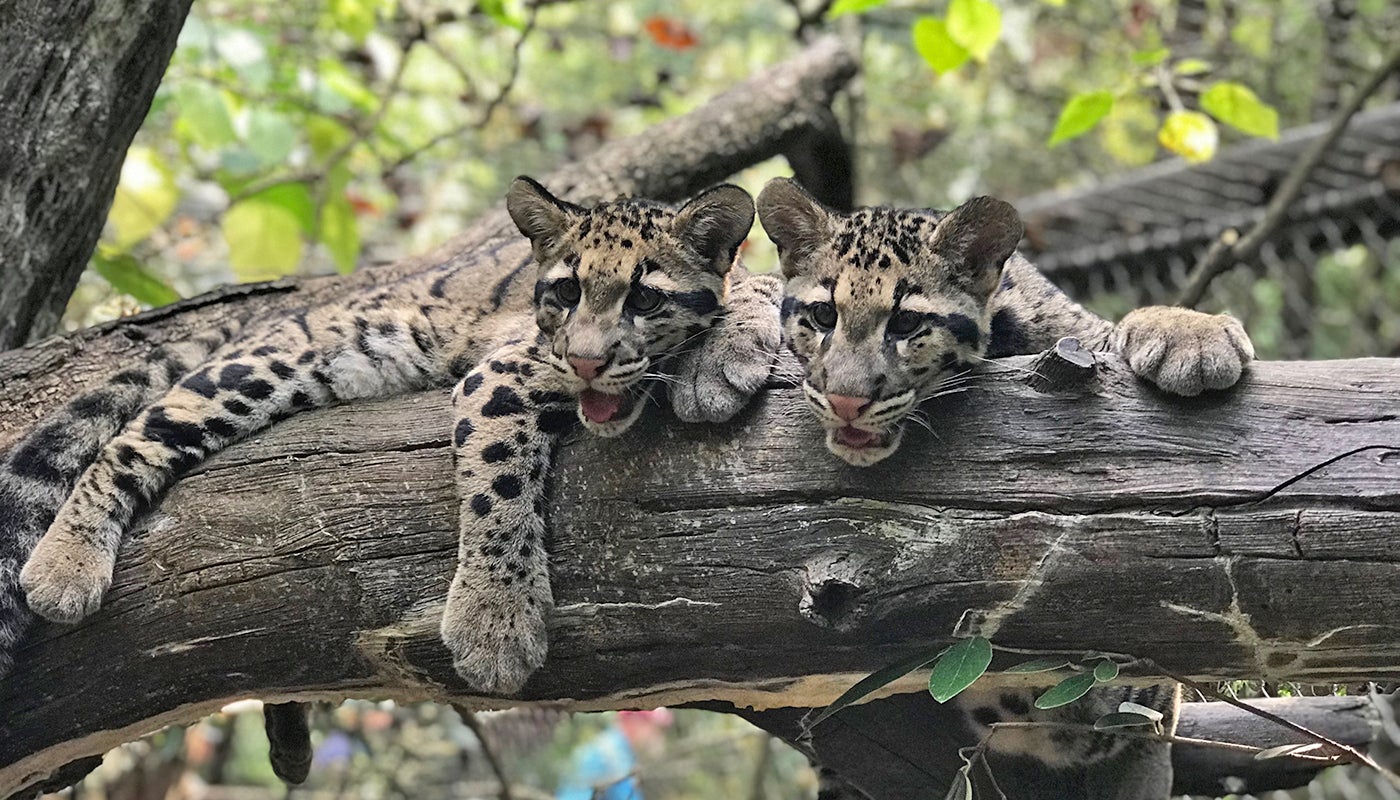
Clouded leopards are amazing climbers and spend a lot of time in the trees. This photo features Paitoon and Jilian laying on one of their perches not long after they arrived on Asia Trail in 2019.
Jessica: In Front Royal, the clouded leopard habitats are tall silos, with plenty of branches for climbing. Our facility also is designed with breeding in mind. While clouded leopards can breed in zoos, research shows there is a higher chance of success if the cats are in a more private space. Our campus is closed to the public, and the clouded leopards’ enclosures are located a ways away from the main campus to minimize disturbances.
Introducing clouded leopards can be a challenge. It’s always easier to introduce cubs, like Jilian and Paitoon. Now we are introducing our 13-year-old male, Ta Moon, to our 4-year-old female, Ariel. It’s more challenging because they are both older.
Our facility is designed with “howdy” windows, which allow Ta Moon and Ariel to see, smell and interact with each other with a safety barrier in between. Once we see positive signs, we can open the doors between their enclosures to give them access to each other’s space. All these elements increase our chances of a successful introduction and breeding.
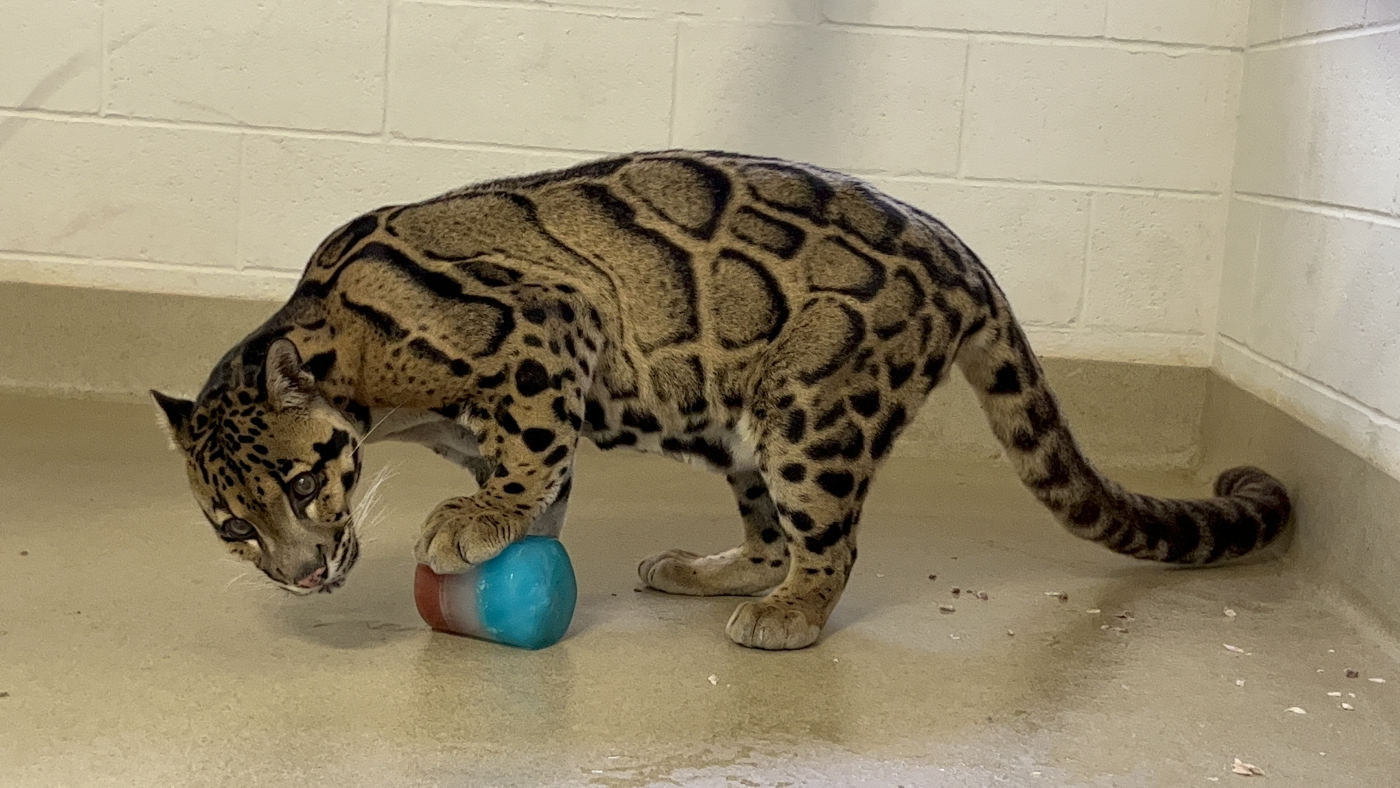
Jessica: Within Smithsonian’s National Zoo and Conservation Biology Institute, keepers at both campuses bring different areas of expertise. Here in Front Royal, we work with fewer species. This allows us to specialize and devote more time to studying an animal’s behavior, biology, health and reproduction in depth. At the Zoo, keepers work with a wider variety of species and spend much of their day caring for their charges and educating visitors. We are fortunate to have a community where we can bounce off each other’s knowledge to support our animals and conservation mission.
Beyond our teams, clouded leopard experts around the world are working together to save this species. In the early 2000s, we were one of three zoos in the United States to partner with Thailand and create the Clouded Leopard Consortium. This jumpstarted clouded leopard breeding in the U.S. Ta Moon and his brother, Sa Ming, were the first cubs born in the United States as part of this program in 2009.
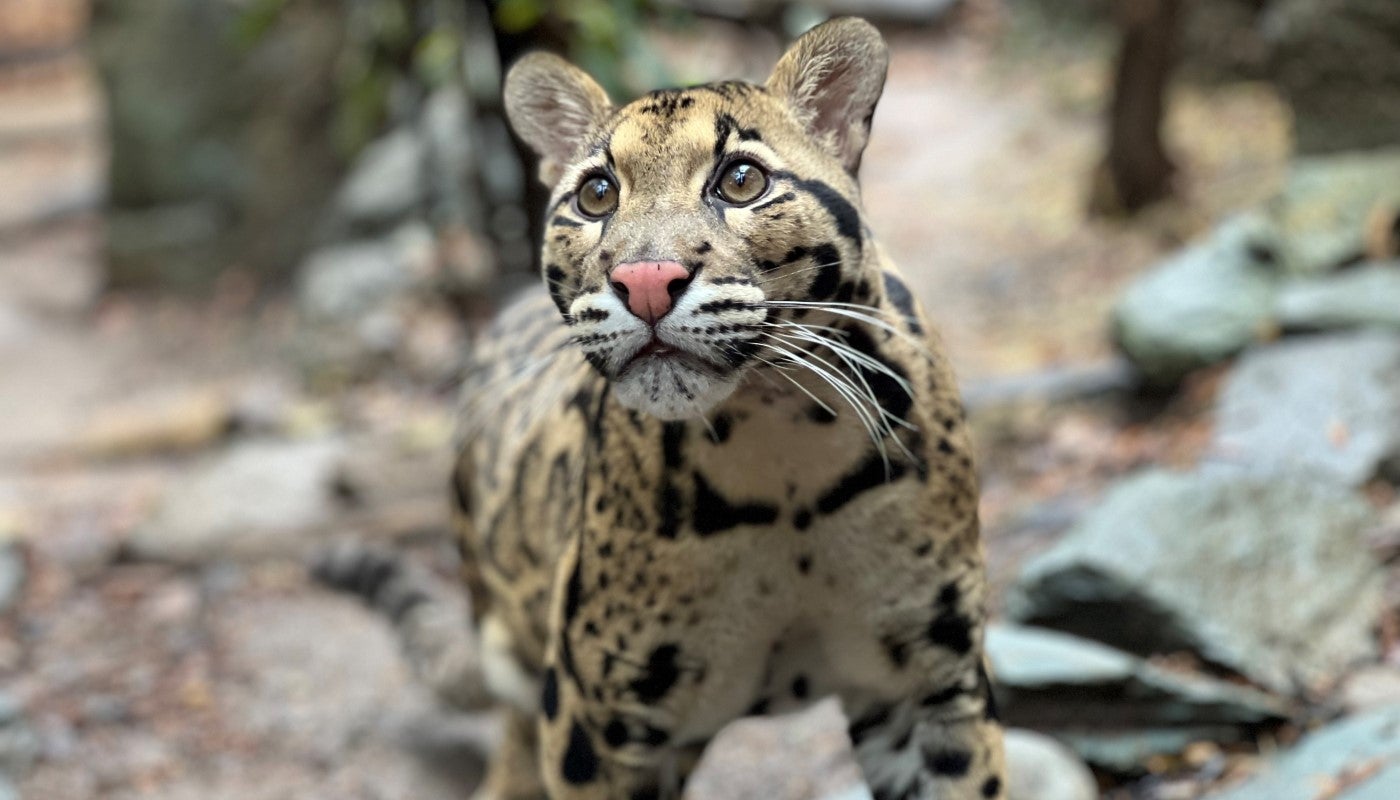
Jenny: While I have loved working with so many different animals over the years, I am a cat person through and through. There’s nothing like greeting Jilian and Paitoon in the morning and receiving a “good morning” chuff in return.
Kaitlyn: Before working with the clouded leopards, I was a keeper in the Department of Nutrition Science. I saw Jilian and Paitoon when they were introduced to their habitat as 4-month-old cubs. They were so small, fluffy and full of energy. I remember Jilian being a more graceful climber than Paitoon, and that hasn’t changed much!
Jenny: Daily enrichment encourages our clouded leopards to use their natural behaviors and keeps them physically active and mentally sharp. Since these cats hunt and sleep in the trees in the wild, we often create different and dynamic climbing experiences for Jilian and Paitoon. We also hang toys from the trees to encourage hunting behaviors.
Cats use their sense of smell to gather information about their environment. Visitors will often see the clouded leopards exploring their exhibit with their noses in the air or following tracks on the ground. We sprinkle a variety of scents around their habitat, or give them hay or wood shavings that another animal—like our Asian small-clawed otters and fishing cats—laid in to give them something different to smell.
Kaitlyn: How the clouded leopards eat is another critical element in their care. These cats have evolved to eat skin, fur, bones and meat, so feeding them whole prey items like frozen-thawed mice and smelt (a small fish) helps keep their digestive system healthy.
Jilian and Paitoon receive a ground beef diet that is formulated for carnivores, as well as a small amount of ground horse meat. They receive this diet twice a day and we use it for husbandry training. Once a week they also get a bone, and both Jilian and Paitoon seem to enjoy licking the marrow out.
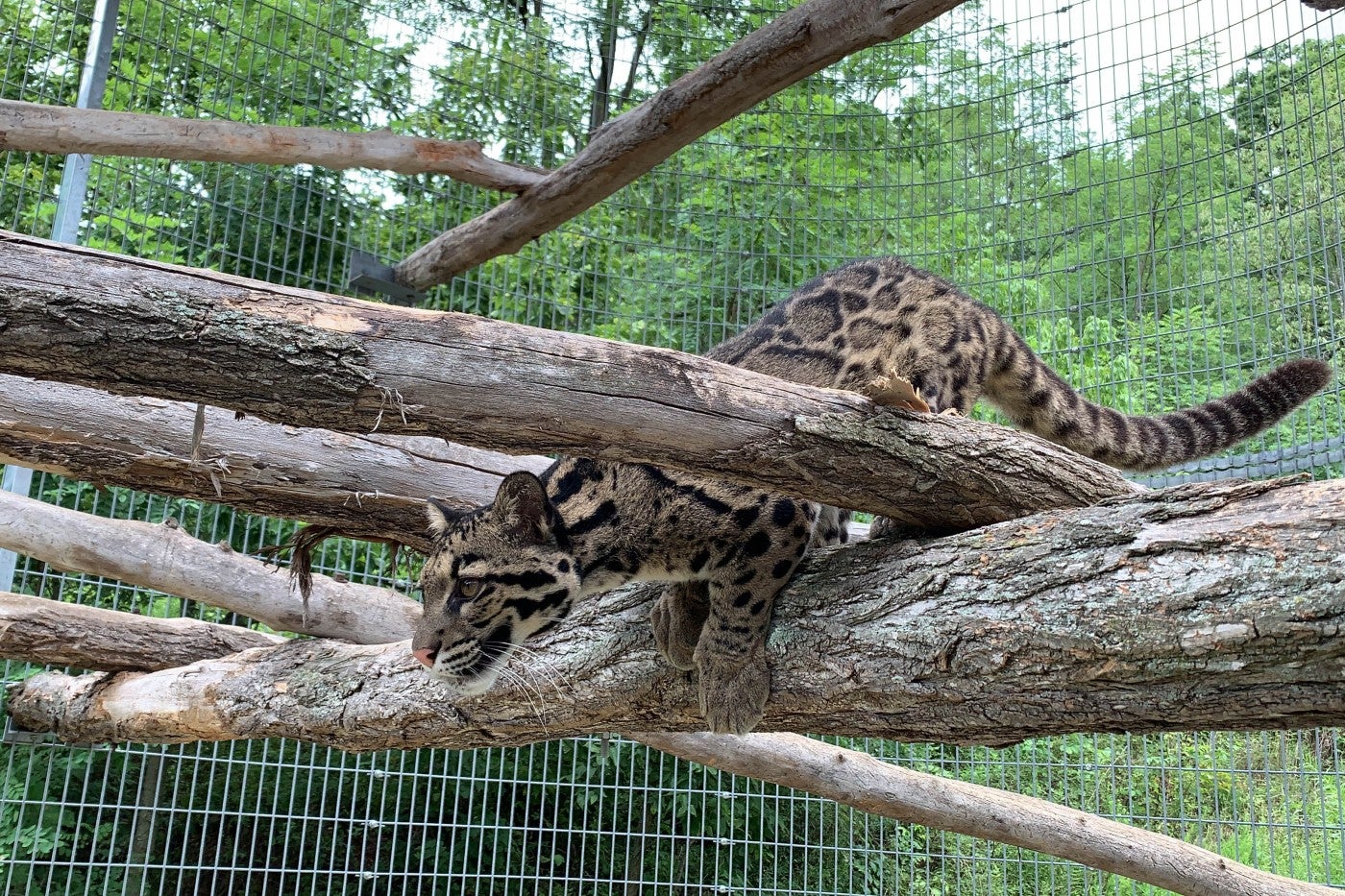
Jessica: Training the clouded leopards to voluntarily participate in their healthcare is another way we keep them healthy. Our clouded leopards are trained to follow a target (a buoy or ball on the end of a dowel), move between enclosure on cue and stand still on a scale. Some of them are also trained to enter a ‘squeeze,’ an enclosed space that holds them still for vaccinations and blood draws.
Each cat is very different, so understanding their motivations is important. Ta Moon, for example, is very food motivated. His favorites are frozen-thawed rabbit and a beef-based carnivore diet. He will voluntarily enter the squeeze and remain calm for these rewards.
Ariel is not food motivated and will not as reliably enter the squeeze. Because she was hand-raised by people, she prefers attention as a reward. Sometimes, all we need to do is talk to her and she’ll do the behavior we ask!
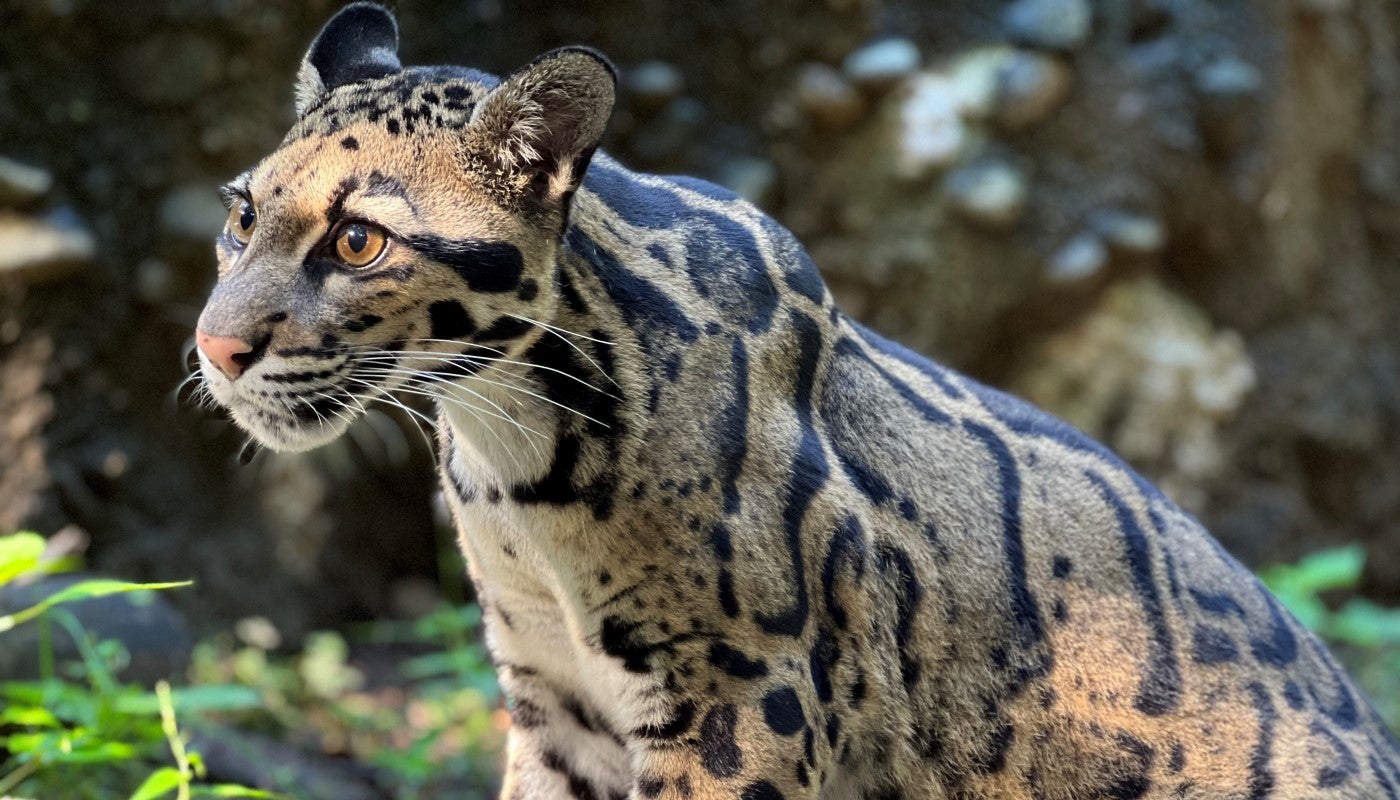
Jenny: Being a zookeeper requires passion. Keepers care deeply about the animals that rely on them for their every need. Those that excel are always educating themselves—through workshops and training—to provide the best care for animals.
Kaitlyn: The opportunity to work with clouded leopards is very rare. But, if you have your heart set on working with these cats, don’t give up! You can gain valuable experience by volunteering or working with other animals. Take it one step at a time, and you’ll be closer to making your goal a reality.
Jessica: Clouded leopard keepers make up one of the most welcoming and supportive communities I know. We also love to talk to visitors about these amazing cats, so don’t hesitate to stop and talk to us!
Climb over to Asia Trail to see Jilian and Paitoon when you plan your visit today!
Wondering how we care for our other animals? Read a variety of stories from all over Smithsonian’s National Zoo and Conservation Biology Institute here.
Related Species:
